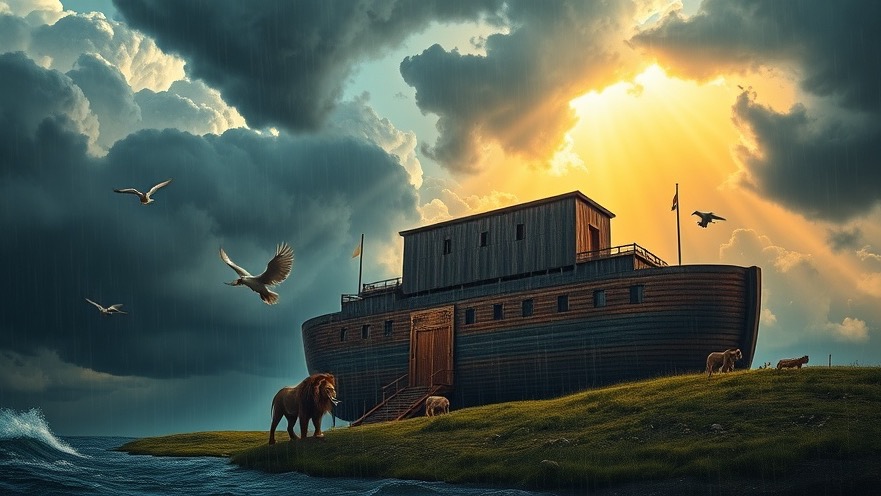
The Significance of the Discovery of Noah's Ark
As the ancient world unfolds, the ongoing exploration of biblical landmarks reminds us of the profound truths encapsulated within sacred texts. The journey into understanding these historical sites, particularly the ruins of Noah's Ark, not only engages the faith-driven community but also encourages a deeper exploration of our spiritual heritage. How these discoveries relate to our present and future prophecies resonates with believers, affirming that faith is substantial and grounded in history.
In How Did the Trek to the Ark Start?, the exploration dives into historical landmarks significant to biblical narratives, inviting a deeper analysis of their impact on faith.
The History Behind Lake Van and the Garden of Eden
Situated in the eastern region of Turkey, Lake Van is more than just a picturesque body of water; it is deeply intertwined with biblical history. Once a capital of the ancient Van Kingdom, it marks a crucial point in the post-flood narrative where humanity began anew. The surrounding landscape features the Euphrates and Tigris rivers, significant waterways mentioned in Genesis, underscoring the divine geography of creation. Interestingly, many scholars suggest that the Garden of Eden is located within this region—a fresh reminder that our collective beginnings are rich with divine purpose and narrative continuity.
Parallel Narratives: Creation and New Beginnings
In the reconstruction of history, the stories of Adam and Noah reveal a beautiful interweaving of God’s plan for humanity. After the flood, when Noah and his family emerged, they were instructed to "be fruitful and multiply," echoing God’s initial command to Adam. This cyclical theme of creation is not just historical; it offers present-day believers insights into renewal, including the hope that emerges during challenging times. Are we, too, called to start again in our own faith journeys? This rich narrative invites us to reflect on our roles as co-creators in God's ongoing work.
Understanding Prophetic Implications
Rick Renner's explorations into these ancient narratives bring forth startling truths from the past, illuminating the mysterious connections between biblical prophecy and our current era. His research unveils the presence of beings—fallen angels and giants—that once populated the Earth, forming critical links to the prophetic threads that repeat in biblical texts today. As believers, recognizing these phenomena allows us to prepare spiritually for the 'days ahead' that the scriptures indicate, which will shape our understanding of what is to come before Christ's return.
Building Spiritual Resilience
Renner’s findings illuminate a path towards developing spiritual resilience. By diving deep into understanding the unseen realm—much like explorers uncovering ancient truths—we arm ourselves with the knowledge to face modern challenges. His book serves as a vital resource for those engaged in spiritual warfare and seeking to strengthen their convictions amidst a culture that often seems in flux. Just as the ruins of Noah's Ark speak to the historical narrative of salvation, the teachings derived from these lessons can enhance our faith’s durability.
In How Did the Trek to the Ark Start?, the exploration of Noah's Ark and surrounding biblical landmarks unveils a treasure trove of insights about our faith and the universe’s divine orchestration. This sacred journey encourages us to connect with the past as we move forward—igniting our call to deeper understanding and commitment to spiritual truth.
To learn more about these exciting discoveries and delve deeper into the significance of Noah's Ark, be sure to check out Rick Renner's insights at rener.org.
 Add Row
Add Row  Add
Add 




Write A Comment